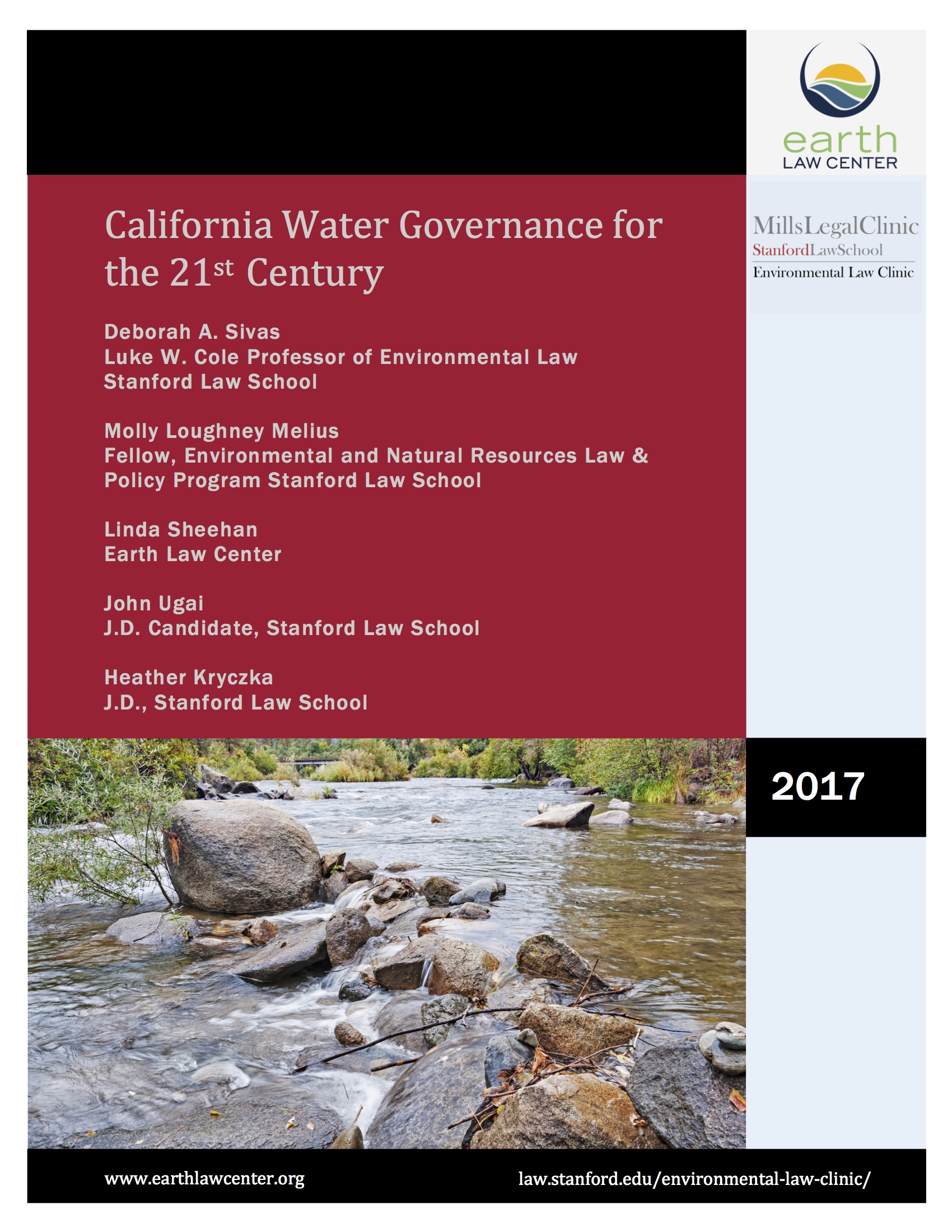RIVERS AND WATERWAYS
We must address today’s water allocation inefficiencies and inequities based on the underlying essence of water as life-giving and undeniably public, rather than private and for-profit.
The ongoing California drought brings our relationship with water into stark focus. Consider two worldviews about water:
- Indigenous California peoples understood their environment as having an intrinsic value of its own. Water, essential to life, was a sacred and respected partner that could not be bartered or sold. Similarly, the naturalist John Muir, in his fight a century ago to save California's magnificent Hetch Hetchy Valley from being dammed for cheap water, urged governance that respects integration with the environment. As he wrote, ”when we try to pick out anything by itself, we find it hitched to everything else in the universe.”
- In contrast, Gifford Pinchot, Muir’s rival and the first chief of the U.S. Forest Service, espoused a “conservation ethic” defined as “the art of producing from the [environment] whatever it can yield for the service of man.” Pinchot’s utilitarian “ethic” viewed water, fish, and forests as “resources” to be extracted and controlled for human benefit and wealth. Pinchot ultimately won the battle against Muir, with Hetch Hetchy destroyed as a result.
Pinchot’s worldview is now so ingrained that we rarely even notice it, let alone challenge it. Our environmental laws assume that the natural world – including waterways and fish – is “property” that is ours to use for our desires.
But these laws do not prevent disappearing species and drying waterways. In California, this is evidenced by the eighteen fish species now at risk of near-term extinction, as well as the 34 species of freshwater fish that are currently on the state or federal endangered species lists. We can only reverse this trend by recognizing the inherent rights of waterways to flow and fish populations to exist and thrive.
More holistic, thoughtful, and values-driven planning for California’s water future – by Californians – is needed. This is a challenge to which Californians must now rise. We must:
- ensure the highest human and environmental needs for water are met first,
- account for climate and waterway limits, and
- wisely and equitably allocate remaining water to achieve social and ecological well-being.
A BLUEPRINT FOR A SUSTAINABLE WATER FUTURE
Based on input from water-policy experts from across the state, California Water Governance for the 21st Century offers a blueprint for a sustainable water future. The report, co-authored by ELC and Stanford Law School's Environmental Law Clinic addresses the shortcomings of California's inefficient and inequitable water management regime and offers a range of potential policies and strategies for transforming our water governance system into one that maximizes social and ecological well-being.
TAKE ACTION
We need your help! Please take these actions to help protect California’s waterways:
Learn: Sign up for ELC’s newsletter to receive information on our efforts to establish instream water rights for waterways in California.
Participate: Become active in state, regional, and local processes that impact our waterways, such as by calling upon the State and Regional Water Boards to allocate more flows to rivers and streams now, before it is too late for waterways and fish species such as the Delta smelt and Chinook salmon.
- Give: Donate to Earth Law Center so that we can expand our work to protect California’s waterways.
Almond orchard near Los Angeles, California, Yann Arthus Bertrand
ELC PRODUCTS
- Stanford Law School Environmental Law Clinic & Earth Law Center, California Water Governance for the 21st Century (2017).
- Comments by ELC on the Bay-Delta Plan Update and Draft Revised Substitute Environmental Document (Mar. 16, 2017).
- Comments by ELC on the Tunnels water project final environmental review documents (Jan. 30, 2017)
- ELC et al., Amicus Letter to Calif. Supreme Court (Oct. 6, 2016), on Clean Water Act compliance and protection of waterways
- Comments by ELC to the U.S. Army Corps of Engineers on compliance with the Tunnels water project with the Clean Water Act (Nov 9, 2015)
- Comments by ELC on the Bay-Delta Conservation Plan environmental review documents (Oct. 22, 2015)
- Comments by ELC et al. to the Secretary of the Interior et al., Compliance with the Federal Clean Water Act to Protect the San Francisco Bay-Delta Estuary (Oct. 6, 2015)
- ELC, Comments to California Dep't of Fish and Wildlife on Draft Proposition 1 Bond Fund Project Solicitation Notice (July 2, 2015)
- ELC et al., Comments to the California State Water Resources Control Board on Identifying Flow-Impaired Waterways in California (Feb. 2015)
- Comments by Earth Law Center to National Marine Fisheries Service on the Proposed Bay-Delta Conservation Plan (July 2014)
- ELC Webinar with Yale Center for Environmental Law and Policy, "Nature's Rights in Practice: The Rights of Rivers to Flow" (Oct. 2013)
- Testimony by Earth Law Center to the California Legislature, Joint Committee on Fisheries and Aquaculture (April 2013)
- Comments by Earth Law Center to California State Water Resources Control Board on the Bay-Delta Water Quality Control Plan (March 2013)
- ELC, "Water in the Green Economy," Alternative World Water Forum, Marseille, France (March 2012)
- Testimony by Earth Law Center to the California Legislature, Joint Committee on Fisheries and Aquaculture (Feb. 2012)
Other Information
- UN-Water, "Water Security and the Global Water Agenda" (2013)
- Whanganui River Agreement, New Zealand: Tutohu Whakatupua (Aug. 31, 2012), recognizing the river's independent standing in court
- Final Declaration of the Blue Pavilion, People's Summit, Rio +20 (Rio de Janeiro, June 2012), calling for waterway rights and the human right to water
- Marseille Declaration of the Alternative World Water Forum (March 2012), calling for waterway rights and the human right to water
- E. P. Pister, "The Rights of Species and Ecosystems," Fisheries 20(4) (April 1995), and "Species in a Bucket," Natural History Magazine (Jan. 1993)



